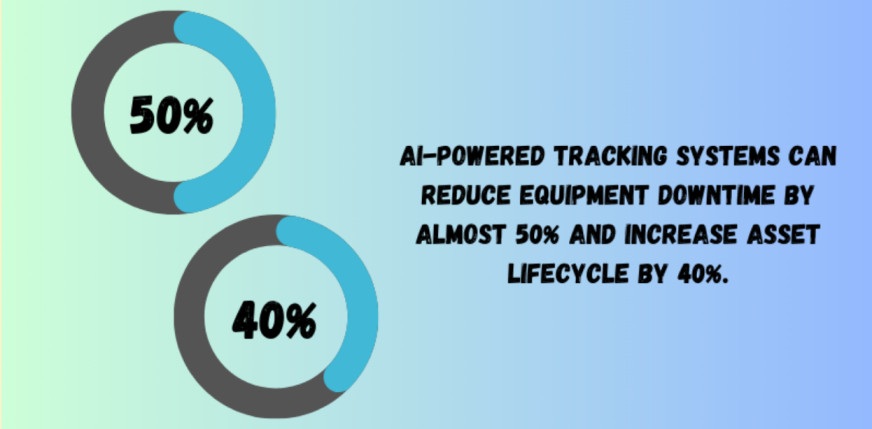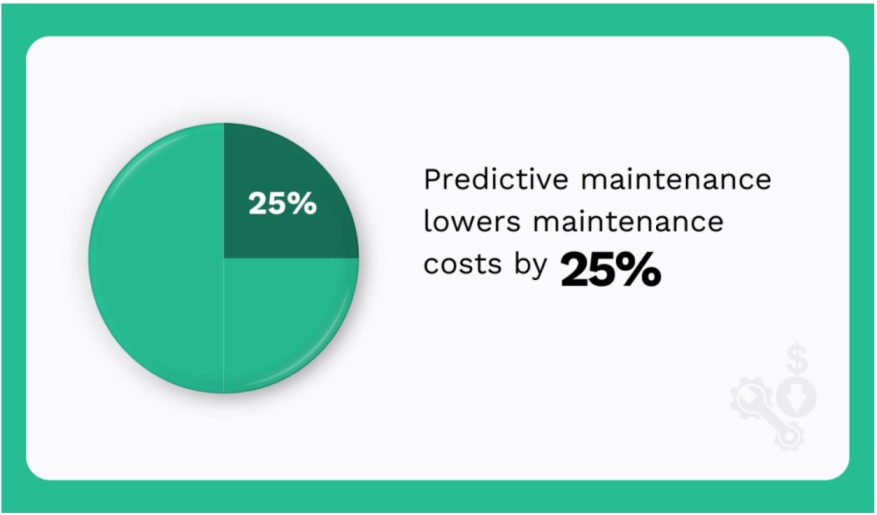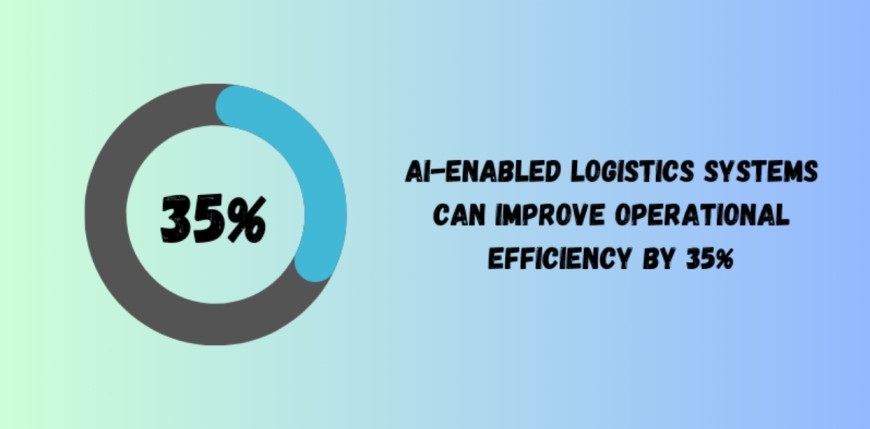What Is AI Asset Tracking? 7 Use Cases You Should Know
Discover what AI asset tracking means and explore real-world use cases that show how AI improves visibility, reduces losses, and increases operational efficiency.
In this article:
- What is AI Asset Tracking?
- 7 Use Cases of AI Asset Tracking
- 1. Predictive Maintenance Scheduling
- 2. Fleet Tracking and Optimization
- 3. Asset Tracking Monitoring
- 4. Smart Inventory Management
- 5. Condition Monitoring for Sensitive Assets
- 6. Theft and Loss Detection
- 7. Automated Audit and Compliance Reports
- Unlock the True Power of AI Asset Tracking with Itefy

Keeping track of physical assets, like equipment, tools, or inventory, can be challenging, especially as your business grows. That’s where AI asset tracking comes in.
By combining smart sensors, machine learning, and real-time data, businesses can now monitor and manage assets more efficiently than ever before.
It’s about solving real problems, lost tools, wasted time, and unexpected equipment failures. In this guide, we’ll break down what AI asset tracking is and the real-world use cases where it’s making a big difference.
What is AI Asset Tracking?
AI asset tracking is the use of artificial intelligence to monitor, manage, and optimize the location, usage, and condition of physical assets in real time. These assets include tools, machinery, equipment, inventory, or vehicles.
Traditional tracking systems often rely on manual updates or barcode scans. However, AI changes that by combining technologies like GPS, RFID, IoT sensors, and machine learning. This allows systems to automatically detect where an asset is, how it’s being used, and whether it needs maintenance or is underutilized.
AI-powered tracking systems can reduce equipment downtime by almost 50% and increase asset lifecycle by 40%. That’s why industries with large, high-value equipment are turning to AI to reduce costs and increase control over their resources.

Source: Mapsted
7 Use Cases of AI Asset Tracking
AI has become a huge part of our lives now. And if we’re not smart enough to incorporate into our systems, we’ll be left behind. Here are seven use cases of AI in asset tracking that can help modernize your business operations:
1. Predictive Maintenance Scheduling
Unexpected equipment failure can halt operations in industries like manufacturing, construction, and logistics. AI solves this issue by analyzing data from IoT sensors, past equipment maintenance logs, and equipment usage patterns.
Machine learning models detect signs of water, such as increased vibration, abnormal temperature, or usage hours, and predict when a failure is likely. This allows businesses to schedule maintenance before breakdowns occur.
Studies show that predictive maintenance can reduce costs by 25% and significantly reduce unplanned outages. This way, your company will face fewer service interruptions, longer equipment lifespan, and lower repair costs.

Source: WorkTrek
2. Fleet Tracking and Optimization
AI is also revolutionizing fleet management in the logistics and transport sectors. By integrating GPS data, fuel consumption, traffic conditions, and driver behavior, AI algorithms help companies like FedEx and UPS optimize real-time routes.
These systems reduce idle time, minimize fuel costs, and predict maintenance needs for each vehicle. For instance, AI can alert fleet managers when a truck is likely to experience engine trouble based on sensor data.
A report by McKinsey revealed that AI-enabled logistics systems can improve operational efficiency by 35% and decrease expenses by 15%.

Source: DamCoGroup
3. Asset Tracking Monitoring
Many businesses underuse valuable equipment without realizing it. AI-powered tracking tools collect data on how often assets are used, when, and by whom. In large facilities like hospitals or warehouses, AI highlights which machines sit idle and which are overworked.
With this data, you can balance usage and avoid unnecessary equipment purchases. For example, if two out of five forklifts are used 80% of the time while the rest sit idle, AI flags this pattern and suggests rotation.
4. Smart Inventory Management
AI transforms inventory tracking by combining inventory tagging systems like RFID and barcode scanning with historical sales data. These systems monitor stock levels in real time and use predictive analytics to forecast future demand.
An example of it includes an AI system that can predict seasonal demand spikes for certain products and automate reordering. This is particularly useful in retail, ecommerce, and warehouse operations.
According to an IBM study, AI-enhanced inventory systems reduce forecasting errors by up to 50%. This leads to lower holding costs, fewer stockouts, and better customer satisfaction.
5. Condition Monitoring for Sensitive Assets
Some assets, like pharmaceuticals, food products, or lab samples, must be stored under specific conditions. AI helps by continuously tracking temperature, humidity, light, and other environmental factors.
If conditions fall outside the safe range, AI systems instantly send alerts or trigger automated responses. A vaccine fridge showing a sudden rise in temperature would prompt immediate action.
This use case is extremely important. The World Health Organization estimates that 50% of vaccines are wasted, and much of it is due to temperature issues. By using condition monitoring, you and other companies can avoid spoilage and protect sensitive inventory.

Source: UnEp.ORG
6. Theft and Loss Detection
AI strengthens security for high-value assets in the construction, healthcare, and logistics sectors. It uses data from RFID tags, GPS tracking, and movement patterns to detect suspicious behavior.
AI, for example, can send alerts if a bulldozer leaves a job site or a medical device is taken away without being checked out properly. These systems learn normal behavior patterns and flag anomalies.
7. Automated Audit and Compliance Reports
Auditing asset usage manually is time-consuming and prone to errors. The use of AI makes this easier because it keeps track of who used an asset, when, where, and how. It compiles this data into ready-to-submit audit reports.
This is particularly valuable in regulated industries like aviation, healthcare, and public works, where compliance is critical. AI also tracks maintenance history, reservation records, and current asset conditions.
Unlock the True Power of AI Asset Tracking with Itefy
If you want to stay ahead, you need to make smarter choices about managing your physical assets. The most powerful solution is AI asset tracking, which can help you prevent loss, improve maintenance, and maximize equipment usage.
If you’re ready to bring your asset tracking into the future, Itefy is here to help. With features like condition monitoring, QR-based checkouts, predictive maintenance scheduling, and real-time dashboards, Itefy makes managing your inventory simple and stress-free.
Try Itefy free and take control of your assets today!
Frequently Asked Questions
-
Yes, AI alerts you to unusual movement or usage. You get notified if an asset isn’t present at a designated zone. This helps prevent theft, misuse, and accidental loss.
-
Yes, AI-powered asset tracking can monitor assets across locations using GPS, IoT devices, and cloud connectivity. This is especially useful for logistics, field service, and large equipment fleets spread across sites or regions.
-
The initial cost can vary depending on the system, but AI asset tracking often saves money over time. It reduces losses, boosts asset lifespan, and cuts labor costs. Many cloud-based platforms offer flexible pricing for different business sizes.
